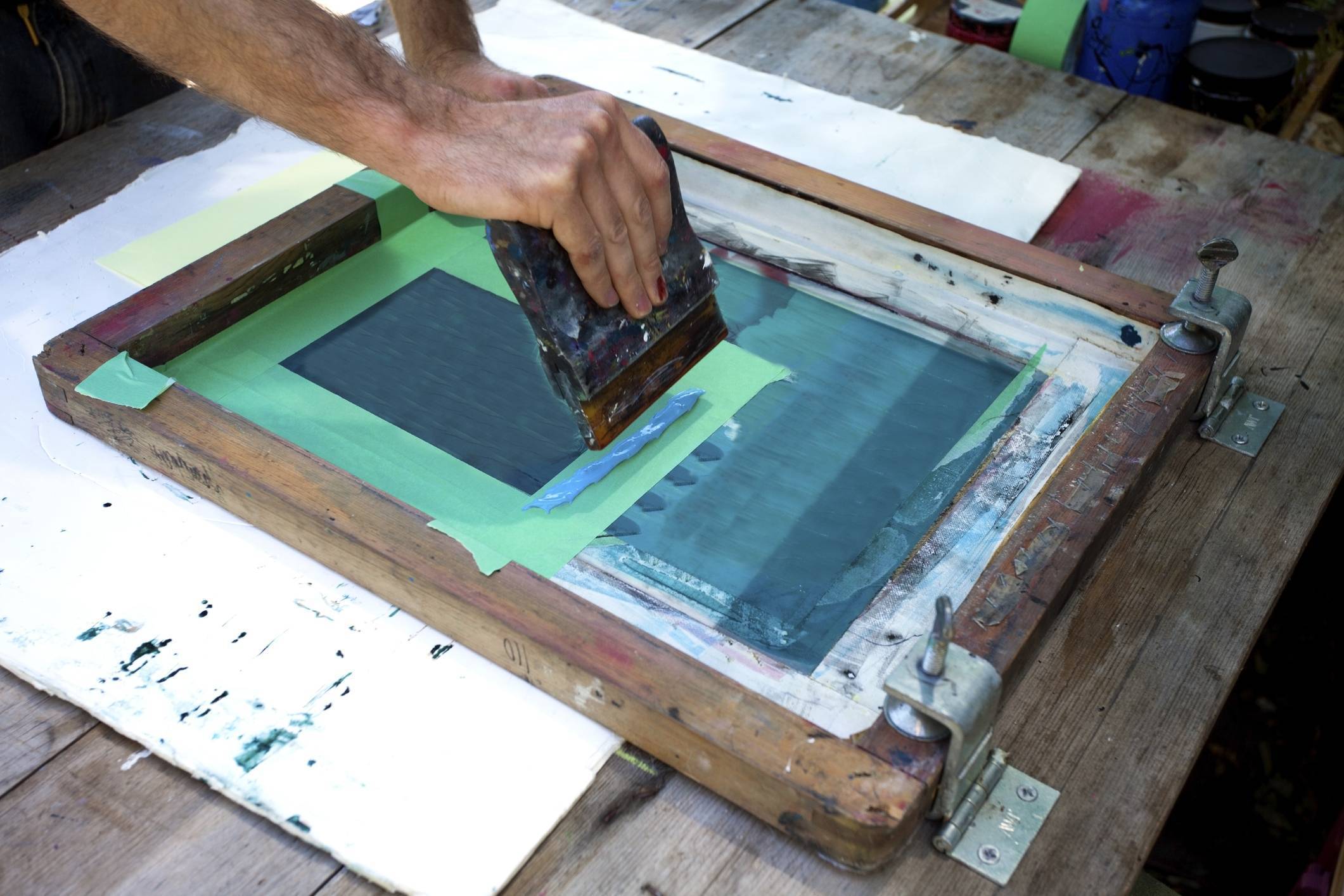ChatGPT said: 10:9 Design Abilene: your community choice for custom apparel and branding
The Necessary Overview to Understanding Screen Printing and Its Versatile Uses
Screen printing has an abundant background that goes back to old times, advancing into an innovative technique utilized throughout different industries today. This overview discovers the details of the screen printing procedure, detailing its applications in home, advertising and marketing, and fashion decoration - 10:9 Design Abilene. Understanding these principles can open innovative potential for both artistic and commercial jobs. The adhering to sections will expose important suggestions and techniques to boost one's screen printing ventures
The Background of Screen Printing
Although screen printing has origins that trace back centuries, its development reflects the technological and artistic innovations of different cultures. Originating in old China, the method was initially used for enhancing textiles and later spread to Japan, where it became indispensable to Ukiyo-e woodblock printing. The method shifted to Europe in the 18th century, where it obtained popularity among artisans and commercial printers. The development of photo emulsion in the 20th century transformed screen printing, permitting even more complex designs and better efficiency. Artists like Andy Warhol better moved its popularity, using the medium to produce legendary jobs that combined commercialism and great art. By the late 20th century, screen printing had actually established itself as a versatile method, used in fashion, marketing, and art. Today, it continues to progress, incorporating electronic modern technology and increasing its applications across various markets.
The Screen Printing Refine Explained
Screen printing transforms imaginative visions right into tangible designs via a collection of specific steps. An image is developed and after that moved onto a screen, commonly made of great mesh fabric stretched over a frame. A light-sensitive solution is applied to the screen, which is revealed to light, setting in areas not covered by the picture. After rinsing the unhardened solution, a pattern is formed.
Next, the screen is placed over the substratum, whether it be textile, paper, or one more product. Ink is after that pushed through the open locations of the pattern using a squeegee, transferring the layout onto the substrate listed below. This process can be repeated for several colors, requiring separate screens for each and every tone. The printed product is healed utilizing warm to ensure the ink adheres appropriately, resulting in a long lasting, vivid design ready for usage.
Kinds Of Screen Printing Techniques

Additionally, specialty methods, such as discharge screen printing, eliminate color from the material to create softer prints, while aluminum foil screen printing uses metal aluminum foil to attain a glossy coating (10:9 Design contact). Each technique uses unique features, dealing with different innovative demands and production scales, inevitably increasing the opportunities within the screen printing domain name
Applications of Screen Printing in Numerous Industries

Furthermore, the signage and advertising markets make use of screen printing for developing eye-catching screens and banners. This technique permits bold colors and detailed layouts that capture interest. In electronic devices, screen printing is used for applying conductive inks to circuit card, crucial for part connections. Additionally, the home décor market embraces screen printing to produce unique styles on textiles and wall art. Generally, screen printing acts as a crucial tool across diverse areas, enhancing products with individualized and aesthetically appealing graphics.
Tips for Successful Screen Printing Projects
While taking on a screen printing job, cautious focus to information can substantially printable safety signs improve the final result. Picking top notch materials is crucial; this includes the screen, inks, and substratums. Using suitable mesh matters can affect ink deposition and information resolution. Preparation is just as vital; complete cleansing of screens and appropriate direct exposure times ensure crisp prints.
Next, accurate registration is critical for multi-color prints. Making use of alignment tools can help attain specific layering. In addition, testing prints on scrap materials before production aids recognize prospective concerns without wasting resources.

Regularly Asked Questions
What Products Are Finest for Screen Printing on Fabric?
Cotton and polyester blends are perfect for screen printing on textile as a result of their durability and ink absorption. Furthermore, specialty fabrics like silk or canvas can produce unique structures and coatings, enhancing the overall style quality.
Just how Do I Tidy and Maintain Screen Printing Equipment?
To keep and cleanse screen printing devices, one ought to routinely wash displays with suitable solvents, evaluate squeegees for wear, oil relocating parts, and store all items in a completely dry, dust-free atmosphere to prolong their life-span.
What Are the Environmental Effects of Screen Printing?
Screen printing can have significant environmental effects, consisting of chemical waste from inks and solvents, water use throughout cleansing procedures, and power consumption. Lasting practices and eco-friendly materials are essential for reducing these negative effects.
Can Screen Printing Be Done in your home Efficiently?
Screen printing can be properly done at home with the right materials and techniques. Hobbyists can produce top quality prints, though success depends on their ability level, devices, and understanding of the process entailed.
What Are the Prices Connected With Beginning a Screen Printing Organization?

Starting a screen printing company includes costs for devices, products, and work space. Preliminary costs usually vary from a couple of hundred to numerous thousand bucks, depending upon the range, high quality of machinery, and wanted manufacturing capacity.
Screen printing has a rich history that dates back to old times, developing right into a sophisticated technique used across different sectors today. An additional technique, rotary screen printing, employs round screens, promoting continuous printing on material rolls, therefore enhancing effectiveness for large productions. Furthermore, specialized techniques, such as discharge screen printing, remove color from the textile to create softer prints, while foil screen printing uses metallic foil to achieve a glossy finish. In the style industry, screen printing is extensively made use of to produce dynamic styles on garments, enabling brands to display their special styles. Cotton and polyester blends are optimal for screen printing on fabric due to their longevity and ink absorption.